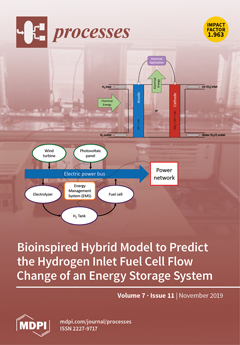Three natural oils extracted from
Mentha piperita,
Pinus roxburghii, and
Rosa spp. were assessed in order to determine their insecticidal activity against the adults of three stored product insects: the rice weevil (
Sitophilus oryzae L.), the lesser grain borer (
Rhyzopertha dominica, Fabricius), and the red flour beetle (
Tribolium castaneum, Herbst.). By Gas chromatography–mass spectrometry (GC/MS) analysis, the main compounds in the n-hexane oil from
Rosa spp. were determined to be methyl eugenol (52.17%), phenylethyl alcohol (29.92%), diphenyl ether (7.75%), and geraniol (5.72%); in the essential oil from
M. piperita, they were menthone (20.18%), 1,8-cineole (15.48%), menthyl acetate (13.13%), caryophyllene (4.82%),
β-pinene (4.37%), and D-limonene (2.81%); and from the foliage of
P. roxburghii, they were longifolene (19.52%), caryophyllene (9.45%), Δ-3-carene (7.01%),
α-terpineol (6.75%), and
γ-elemene (3.88%).
S. oryzae and
R. dominica were reared using sterilized wheat grains, and
T. castaneum was reared on wheat flour mixed with yeast (10:1, w/w), all under laboratory conditions (27 ± 1 °C and 65% ± 5% Relative humidity (R.H). Two toxicity bioassays were used, as well as contact using thin film residues and fumigation bioassays. The results indicated that
M. piperita caused a high toxicity for
S. oryzae compared to other insects. High significant variations were observed between the tested
M. piperita doses against the stored insects, and this natural material could be used to control insects that infect the grains. Also, the data indicated that the
Rosa spp. oil had a low-toxicity effect against these insects compared to other oils. We recommend using natural oils against the stored weevils and petals, rather than the chemical agent, so as to serve human health.
Full article





